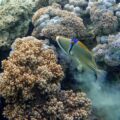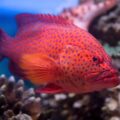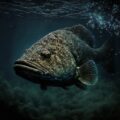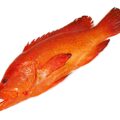Malabar grouper, commonly known as black-spotted rock cod, is a large and prized fish in the Indo-Pacific region. Its dark brown or brownish gray-brown body with scattered white or yellowish markings specifies it as a member of the Serranidae family.
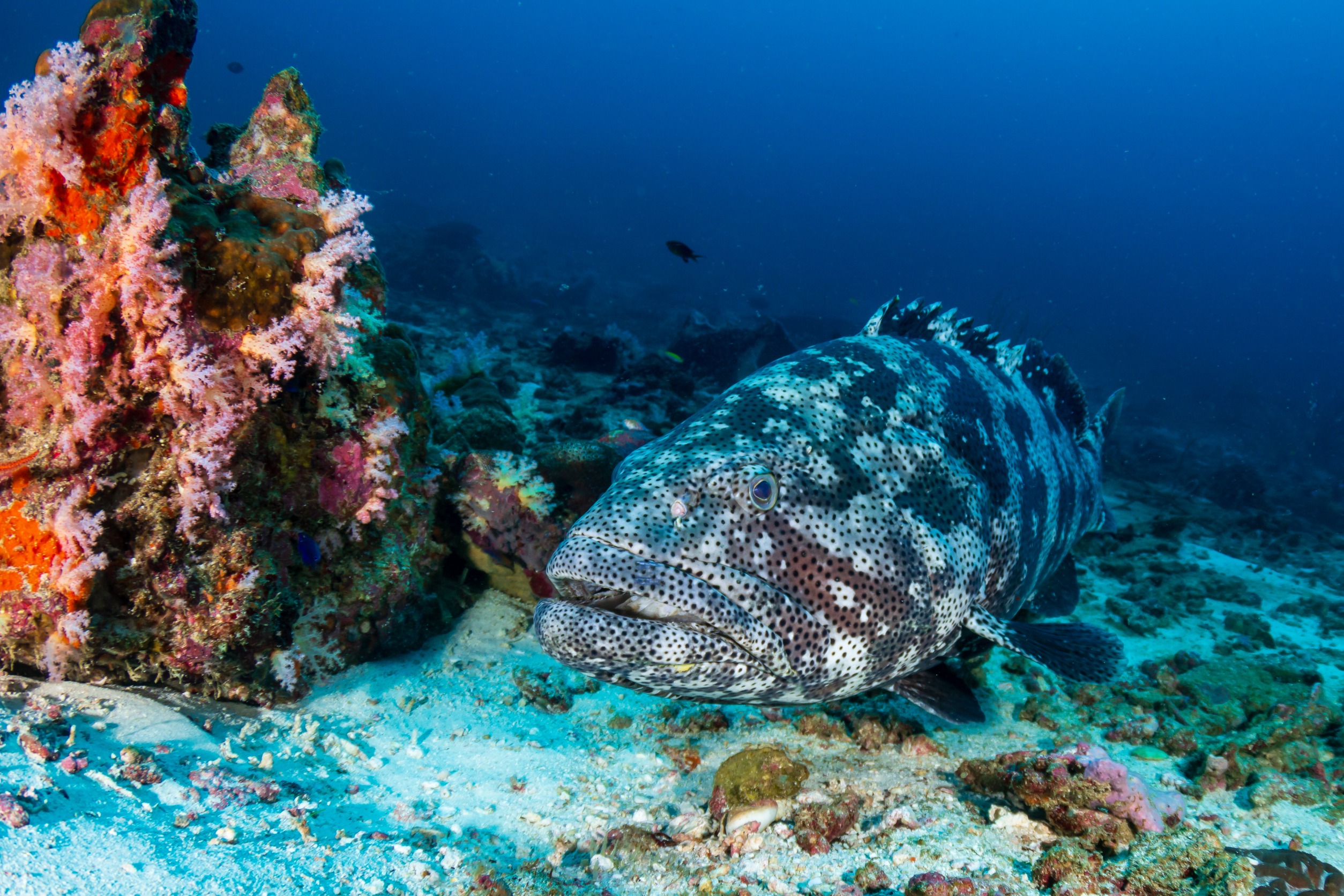
Distribution and Habitat
The Malabar grouper is found throughout the Indo-Pacific region from the Red Sea to the western Pacific Ocean. Occasionally it is found in estuaries, mangrove swamps, and the shallow waters of coral reefs and rocky terrain.
It is a tropical fish species that needs water between 25 and 30 degrees Celsius. The Malabar grouper is active and moves around throughout the day, particularly while hunting.
Diet
As a predatory fish, the Malabar grouper feeds on a wide range of tiny fish, crabs, and cephalopods. Sardines, grunts, and other small fish comprise most of its diet. Additionally, it eats squid, crabs, and shrimp.
As a voracious predator, the Malabar grouper calmly awaits its prey to come close before striking with enormous jaws and powerful teeth that can catch and consume its prey whole.
Reproduction
The Malabar grouper is a protogynous hermaphrodite, which means it is born a female and then transforms into a male. When the fish reaches a length of roughly 70 to 100 cm, this shift typically takes place.
Based on the locale, the Malabar grouper has a different spawning period. It spawns between April and June in some regions and between September and December in others. The male Malabar grouper transforms into a vivid yellow color during the breeding season and clears a space on the stony surface to build a nest.
The male fertilizes the eggs after the female has laid hers in the nest. When the eggs hatch, which takes about 25 to 30 hours, the male looks after them. Planktonic larvae float with the currents till they land on the ground.
Importance to humans
Malabar grouper is a significant commercial fish highly valued for its flavor and nutritional content. It is frequently offered in upscale restaurants and is regarded as a delicacy in many cultures. Due to its enormous size and powerful striking prowess, the Malabar grouper is appreciated among amateur anglers.
Malabar groupers are now a vulnerable species in several areas due to habitat loss and exploitation, which has caused a drop in population. The Malabar grouper has been designated as a vulnerable species by the International Union for Conservation of Nature (IUCN) due to excessive fishing, habitat destruction, and environmental degradation.
The Malabar grouper has been listed in the second appendix of the Convention on International Trade in Endangered Species of Wild Fauna and Flora (CITES), which governs the international purchase and sale of these species.
Conservation Efforts
Numerous conservation initiatives have been implemented to safeguard the Malabar grouper from overfishing and habitat loss. Malabar grouper fishing is prohibited in many nations due to prohibitions that include catch quotas, closed seasons, and minimum size restrictions.
Marine conservation zones are maintained to ensure a safe refuge for the Malabar grouper and other aquatic species.
How to identify the Malabar Grouper
Various physical traits help identify the grouper species. To identify this species, keep in mind the following distinguishing characteristics:
Size
The Malabar grouper is one of the most massive grouper species, with adults frequently exceeding sizes of as much as two meters (6.5 feet) and weights of as much as 100 kilograms (220 pounds). However, the dimension of this species’ individuals may differ based on their current age, place of residence, and other environmental conditions.
Malabar grouper juveniles can be less than 10 cm (4 inches) long, considerably shorter than adult groupers. As they grow older, they can grow to lengths of several feet and develop into significant predators in their ecology.
Coloration
Malabar grouper color might vary slightly based on age, location, and habitat. The Malabar grouper has darker patterns on its head and body but is ordinarily gray or brownish in hue.
The fish usually seems speckled because the margins of its scales are frequently lighter in color. Malabar grouper fins can contain darker bands or patches, especially near the edges. While the fish swim in the water, these marks can help differentiate the Malabar grouper from other grouper species.
Body Shape
One of the most distinguishing characteristics of the Malabar grouper is its body shape. The Malabar grouper has an enormous head and mouth that it employs to catch and consume prey. It also has a thick, extended body. The body narrows as it approaches the circular tail.
The Malabar grouper has a long dorsal fin that runs from its head to its tail. This fin comprises 14–16 soft rays and 11 spines. Similar in length and running from immediately below the lateral fins to the tail, the anal fin is found on the fish’s underside.
Scales
The skin of the Malabar grouper is covered in broad, thick scales tightly adhered to it. These scales assist the fish in traveling through the water with less resistance and protect it from predators.
The Malabar grouper’s scales are crucial for controlling the fish’s buoyancy, which is necessary for keeping the fish in the water columns. Across the fish’s body, its scales are in rows that overlap, creating a smooth surface that lessens drag as the fish swims.
When viewing preserved specimens or inspecting fish scales taken from the environment, the scaly appearance of the Malabar grouper can be a helpful trait for recognizing this species.
Spines
The 3rd spine on the dorsal fin of the Malabar grouper is the largest of the 11 spines on the fish. The fish’s sharply stiff spines perform an essential function in defending them against predators. The Malabar grouper can erect its spines when in danger to seem more prominent and more menacing to prospective predation.
The Malabar grouper can raise its fins and erect its spines to show its authority over a particular area. It additionally utilizes its dorsal spines to defend its territory from other fish. Malabar grouper spines can be a powerful protection mechanism but may also be dangerous to anyone who mishandles the fish. When approaching any fish, such as the Malabar grouper, with sharp spines, it is essential to proceed with precaution.
Teeth
The Malabar grouper possesses strong, cutting-edge teeth ideally suited to its diet of predatory fish. The upper and lower jaws of the Malabar grouper both have teeth used for crushing and swallowing prey, such as fish, crabs, and cephalopods.
The Malabar grouper can readily rip through the flesh and bones of its prey because of its sharp, pointed jaws. Additionally, the teeth curl internally, which aids in stopping prey from escaping after it has been caught.
The Malabar grouper must be ready to control its teeth and mouth when swallowing larger prey because it typically consumes its prey whole. Its powerful, pointed teeth are one of the adaptations that have helped the Malabar grouper thrive as a predator in various maritime habitats.
What are the fish species Malabar Grouper Live With?
What are the fish species that the Malabar grouper lives with? Groupers may coexist with a wide range of fish species, including those that are smaller or of similar dimensions. The following fish species can be observed coexisting with Malabar groupers:
Wrasses
A wide variety of fish species known as wrasses are found in many reef environments. They are fascinating to watch because they frequently have striking colors and distinctive mannerisms. The cleaner wrasse is one species renowned for its symbiotic association with other fish.
Both the cleaner wrasse and the fish being cleaned profit from removing insects and dead skin from the bodies of other fish. This habit is crucial to the reef’s environment because it keeps other fish healthy and parasite-free.
Parrotfish
A group of fish species uses their mouths, which resemble beaks, to scrape algae and other plant matter off the coral and rocks on the reef. They are a crucial ecosystem component because they aid in regulating algae development and preserving the coral and other creatures’ delicate equilibrium.
Parrotfish are noted for their colorful skin and distinctive patterns, making them a pleasant sight for divers and snorkelers on the reef, in addition to their significant ecological significance. Some parrotfish species envelop their bodies in a mucus cocoon at night, which aids in shielding them from scavengers.
Snappers
Snappers are an extensive group of fish species seen in coral reefs and rocky outcrops, among other reef habitats. They can catch and eat smaller fish and crustaceans using their well-known pointed snouts and strong teeth.
Across the world, numerous species of snapper are significant targets for commercial and recreational fishing because of the strong demand for their meat and other byproducts.
Due to their widespread consumption, some snapper species have experienced overfishing in specific regions, making sustainable fishing methods necessary for the long-term survival of these fish populations. Along with several kinds of snapper, the Malabar grouper is a well-liked fish for commercial and amateur fishing. The two fish inhabit very similar habitats.
Groupers from other genera
The Nassau grouper, the red grouper, and the black grouper are just a few of the many different kinds in the grouper family, which also contains numerous additional species like the Malabar grouper. Because of their vast, sturdy bodies and strong jaws, these species can catch and eat prey, including fish, crabs, and cephalopods.
Similar to the Malabar grouper, other grouper species generally inhabit areas with seagrass meadows, coral reefs, and rocky outcrops. Appropriate fishing methods are crucial for the long-term well-being of these fish populations because certain kinds of grouper are also popular targets for commercial and leisure fishing worldwide.
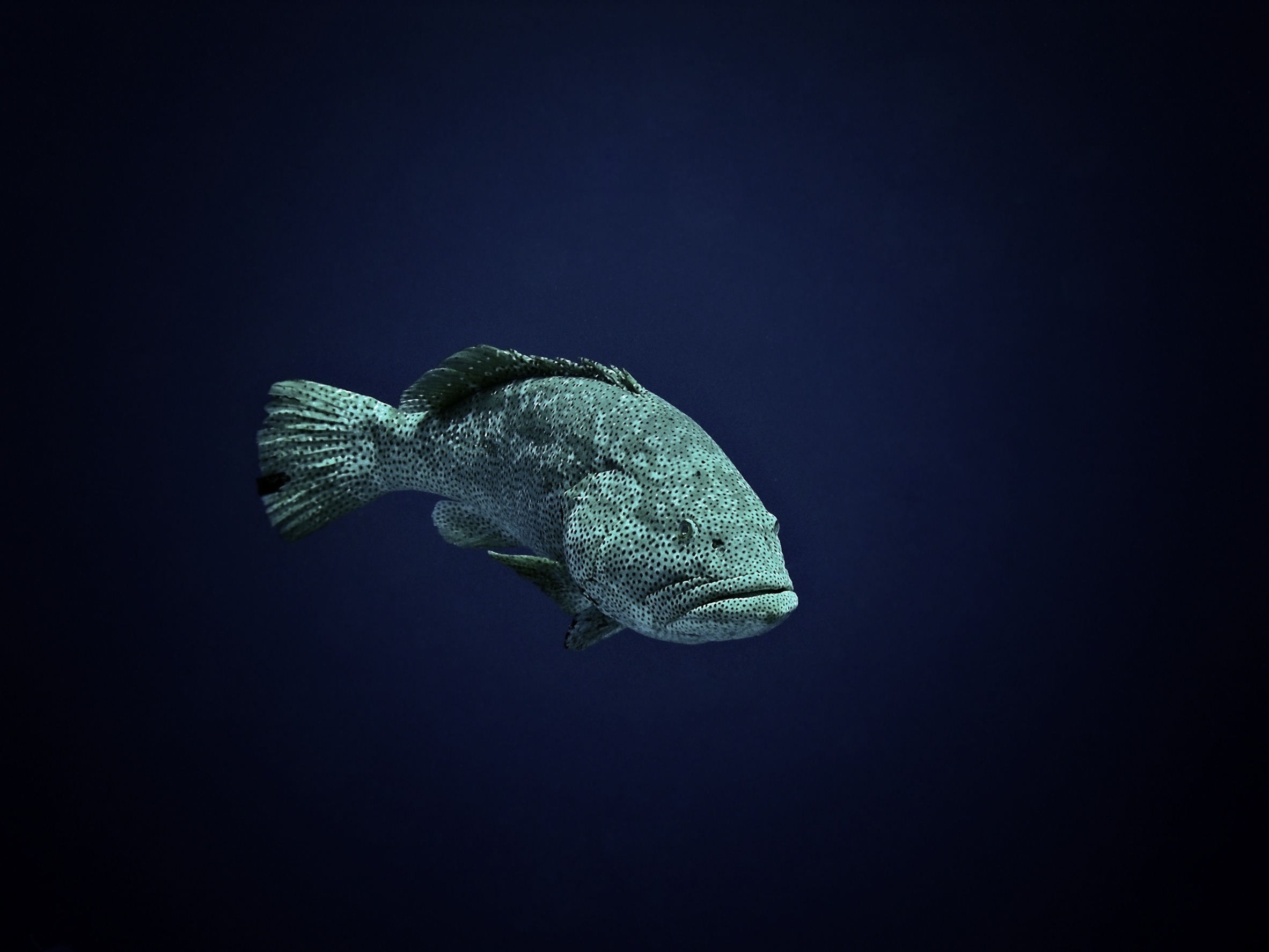
Angelfish
Malabar Grouper can be found in the same reef settings as angelfish. Angelfish are a varied collection of fish species found in tropical and subtropical waters worldwide, with many species on coral reefs.
Among the angelfish species seen alongside Malabar Grouper are the French angelfish (Pomacanthus paru), gray angelfish (Pomacanthus arcuatus), and queen angelfish (Holacanthus ciliaris).
Like various reef fish species, Angelfish perform an essential role in the reef ecosystem’s health and balance. They frequently interact with other fish species in complicated and exciting ways.
Triggerfish
Malabar Grouper can be found in identical reef settings like triggerfish. Triggerfish is one of several fish species in tropical and subtropical waters worldwide, with many species widespread on coral reefs.
Triggerfish have distinct activity and feeding habits, and they are frequently spotted on the reef, grazing on algae, crabs, and other tiny creatures. Like other coral fish species, Triggerfish perform an essential role in the reef ecosystem’s health and balance. They may communicate with different kinds of fish in complicated and fascinating manners.
Conclusion
The Malabar grouper is a big, predatory fish that lives in the Indian Ocean and its closest seas. It is an important commercial and recreational fishery in many areas, and its meat and additional commodities are highly prized.
Malabar groupers contribute to their ecosystems’ broad diversity and productivity, making them a crucial part of the reef community. A Malabar grouper can be identified by its colors, body shape, scales, spines, and jaws.

